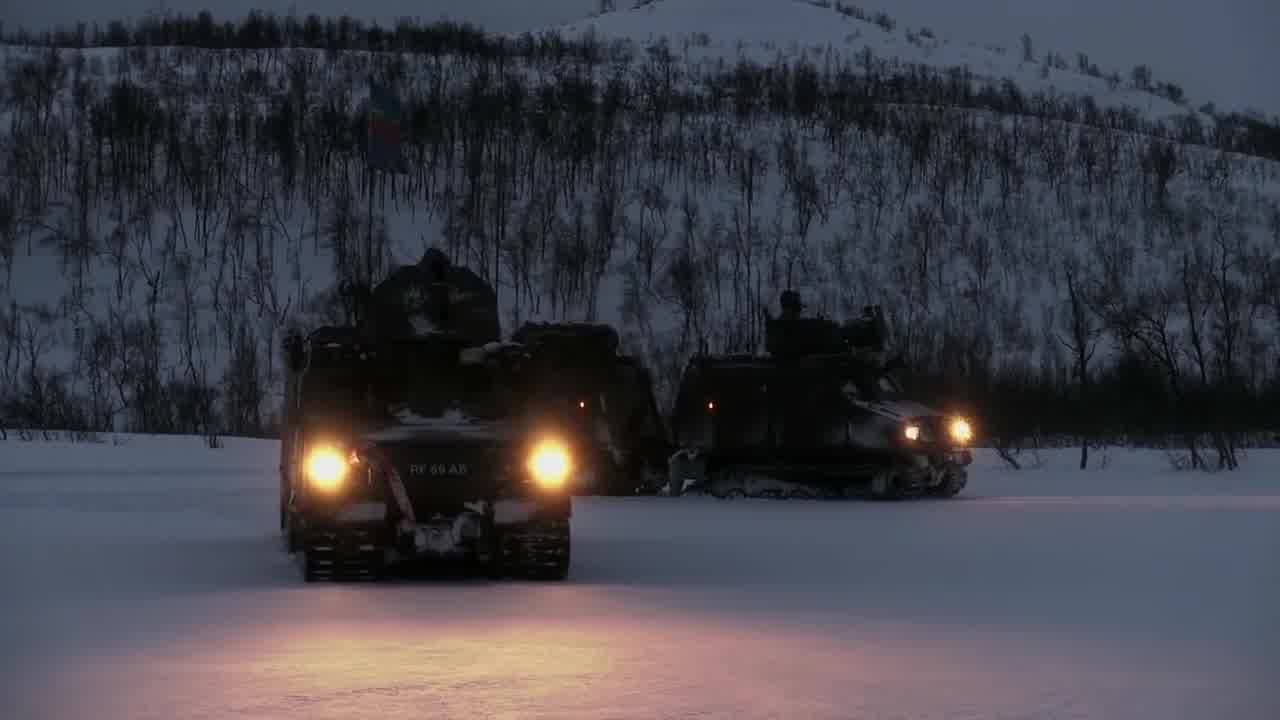The current Royal Marines Armoured Support Group (RMASG) is an element of the Royal Marines that operates the Viking BvS 10 All Terrain Vehicle. It is based at RNAS Yeovilton in Somerset. The original RMASG was formed in the Second World War to give British and Commonwealth forces heavy fire support in the opening attacks of the Normandy Landings. The original Royal Marines Armoured Support Group was formed during the Second World War and took part in the Invasion of Normandy, where it provided fire support. It was primarily equipped with Centaur IV tanks fitted with a 95mm howitzer; there were also a smaller number of Sherman tanks, which were used as artillery observation posts or command vehicles. The Group consisted of five Armoured Support Batteries, organised in two “Armoured Support Regiments”, each of two Armoured Support Batteries, plus an independent “Armoured Support Battery”.

Each Battery was subdivided into four Troops, with each Troop equipped with four Centaur IV and one Sherman tank, giving a total of 80 Centaur and 20 Sherman tanks in the entire Group. The Group did not fight as a single military formation, but rather was divided between the British & Canadian D-Day beaches. The World War II RMASG was disbanded two weeks after D-Day (D+14). Part of the Armoured Support Group, which had been reformed as the 29th Infantry Battalion, Royal Marines, was moved to Aldershot to become the 34th Amphibian Support Regiment, Royal Marines. The Regiment moved to India in 1945, collected equipment and trained for operations which were planned to take place in Malaya in September. The unit was organized into a headquarters, two support batteries each of three troops armed with four LVT (A-4), one rocket battery of three troops of four LVT(R) and one flank battery of two troops of five LVT (F). This regiment was disbanded in 1948.

The present day Royal Marines Armoured Support Group was formed on 10 December 2007 from the Royal Marines Armoured Support Company (Afghanistan) and the Royal Marines Viking Training Squadron, a subunit of the Commando Training Centre Royal Marines based at the Armour Centre in Bovington, Dorset. The Royal Marines Armoured Support specialisation had been established in 2005 in recognition of the fact that the then relatively new BvS10 Viking armoured vehicle capability demanded a high degree of professional and specialist crew training and a professional career progression for Royal Marines within the Armoured Support ‘branch’. A proposal to form a new specialisation and indeed to call it the ‘Armoured Support’ specialisation (in recognition of the Royal Marines’ armoured units of WW2) was put forward and argued by then OC Viking Training Sqn – Maj Jez Hermer MBE RM, the officer who had taken BvS10 from concept, through trials, development and training design and brought the vehicle into service after establishing the VIKING Training Squadron at the ARMCEN Bovington.

RMASG is under the overall control of 539 Assault Squadron Royal Marines and is the armoured element of 3 Commando Brigade, equipped with the Viking armoured vehicle. The Viking[8] BvS10 All Terrain Vehicle, is a protected tracked vehicle, which can be configured for troop transport, command and control and other tasks. Viking is equipped with the 7.62mm General Purpose Machine Gun and some crewmen are armed with the L22 carbine version of the British SA80 family. Viking has been deployed operationally with British Forces in southern Afghanistan, supporting both 3 Cdo Bde and other roulements. The need for the RMASG came about because the Viking was so successful with 3 Cdo Bde on Op Herrick 5 that the incoming forces on Op Herrick 6 requested that the Vikings stay on creating a problem as the Army has no Viking trained drivers. The solution was the RMASG, an expanded unit that could continue to operate the Viking for future roulements, this led to the drivers of the RMASG having one of the highest operational tempos in the forces.















